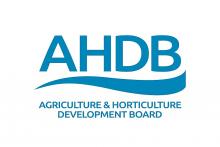Classification of herbicides
Herbicides are classified according to the Herbicide Resistance Action Committee (HRAC) system. This is a system of numbered groups, each number referring to a specific mode of action. Within each group active ingredients are further grouped according to their chemical families.
The 2 most common herbicide groups are:
Group 1: Acetyl-CoA carboxylase (ACCase) inhibitors
- ACCase is an enzyme involved in fatty acid synthesis. Herbicides in this group inhibit this important metabolic process in plants.
- Their are 3 main chemical families in this group, referred to as FOPs (e.g clodinafop) , DIMs (e.g cycloxydim) and DENs (e.g pinoxaden).
Group 2: Acetolactate synthase (ALS) inhibitors
- ALS is an enzyme involved in the biosynthesis of branch-chain amino acids (valine, leucine and isoleucine). ALS inhibiting herbicides block this process meaning the plant cannot make vital proteins it needs to survive.
- There are several chemical families in this group including the sulfonylureas (e.g mesosulfuron-methyl), Imidazolinones (e.g imazamox) and Triazolopyrimidines (e.g florasulam).
You can use the HRAC Global herbicide classification look-up (link provided at the bottom of this topic) to find all the different groups of herbicides, chemical families and active ingredients of herbicides.
Types of herbicides
Selective vs non-selective (broad-spectrum)
- Selective herbicides only work on a specific range of weeds whereas non-selective herbicides can control a wider variety of weeds.
- For example ACCase inhibitors (HRAC group 1) selectively control grass weed species (as many broadleaf species have a naturally tolerant ACCase enzyme) whereas the herbicide glyphosate (HRAC Group 9) can target both broadleaf and grass species.
Contact vs Systemic (translocated)
- Contact herbicides kill only the part of the weed that the herbicide contacts directly whereas systemic herbicides are absorbed by the weed at the point of application and are then circulated by the vascular system, thus reaching other tissues.
- Contact herbicides tend to be more rapidly acting but may allow re-growth if certain tissues such as the roots are unaffected by the herbicide. Systemic herbicides tend to take longer to exert their effects on the weed but will kill the entire plant.
- For example glufosinate (HRAC Group 10) is only effective where it comes into contact with the weed whereas glyphosate (HRAC Group 9) is absorbed by the leaves and then moves and accumulates in the plant roots.
Residual vs non-residual
- Residual herbicides will remain in the soil in an active form for longer periods of time, allowing longer lasting control of weeds whereas non-residual herbicides are rapidly broken down in the soil and do not have lasting effects.
- For example flazasulfuron (HRAC Group 2 -sulfonylurea) may provide up to half a year residual activity whereas glyphosate (HRAC Group 9) has either no or very little soil residual activity as it loses herbicidal properties upon binding with soil particles.
Pre-emergent vs post-emergent
- Pre-emergent herbicides are applied to soil to prevent any weeds from germinating and have residual effects whereas post-emergent herbicides are applied to kill weeds once they have already germinated and emerged and tend not to have residual effects.
- For example the pre-emergence herbicide triallate (Group 15) is applied to soil where it prevents grass weeds from germinating whereas fluazifop (HRAC Group 1) is applied to grass weeds after they have emerged where it is absorbed through the leaves.
Useful resources:
Herbicide products authorised for use in the UK: Health and safety executive pesticides register
Herbicide classification: HRAC Global Herbicide Classification look-up







